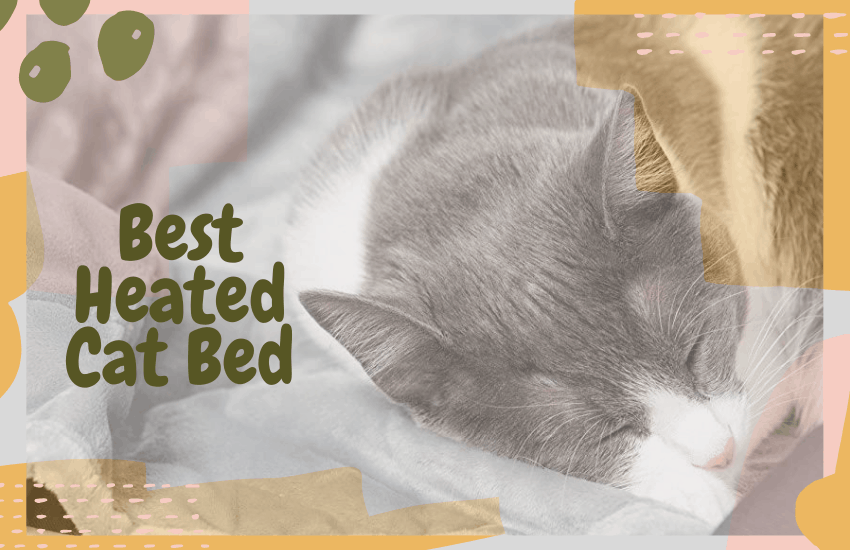
Cats are quick to find the warmest spot to sleep in. Whether it’s a sunny windowsill, a warm radiator or grabbing your seat when you get up to take a bathroom break, if there’s a cozy place to sleep, then your cat will find it.
So you can understand why heated cat beds like the Thermo-Kitty Heated Cat Bed are so popular among pet owners. But should you be treating your kitty to a warmed bed? If so, what should you look for in a heated cat bed? Read on to find out!
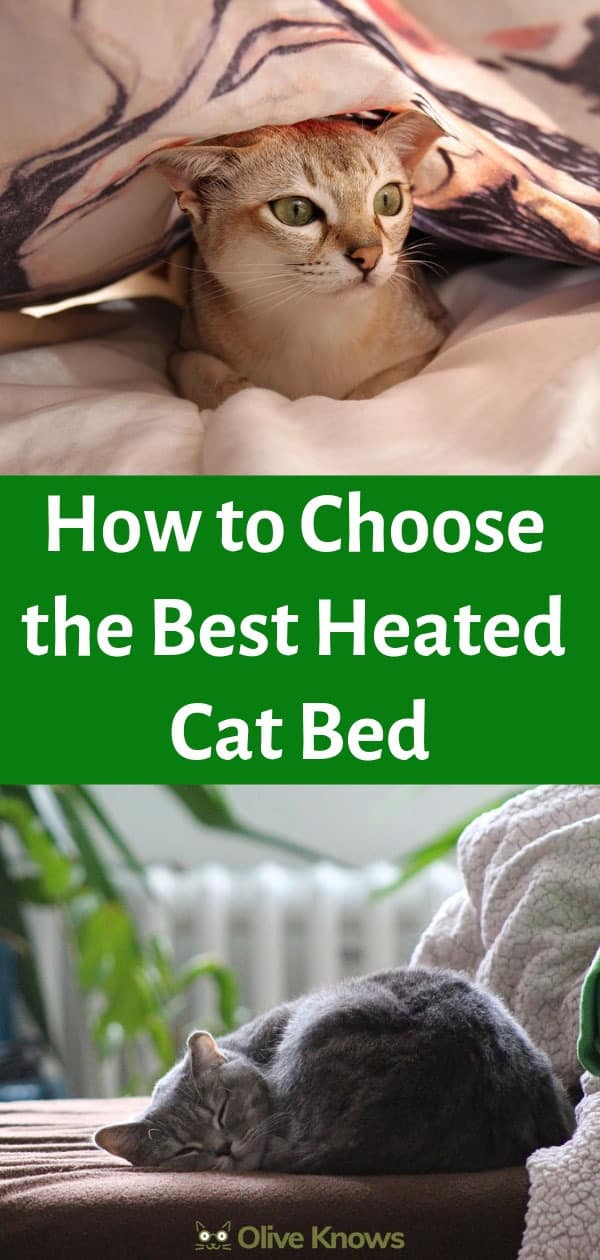
Table of Contents
Who Should Buy a Heated Cat Bed?
The easy answer to this is anyone who owns a feline. All cats love to curl up (or take over) a snuggly spot, so there’s really no limits on how you want to spoil your furry pal.
But there are a few groups of kitties that would specifically benefit from heated cat beds, as opposed to your sunny window sill or their usual pillow.
Cats who Live in Cold Climates
If you have cats that regularly weather polar vortexes with you, heated cat beds are a simple way to make your pets more comfortable during the winter or any time of year when you bring out your own electric blanket.
Cats don’t experience temperatures in exactly the same way humans do, but once the air hits below zero, everybody’s freezing. A good rule of thumb is to use a heated cat bed whenever you start getting out your own extra blankets. Your kitties will thank you.
Hairless Cats
If your friend is not actually furry, like the Sphynx or Peterbald varieties, they are more prone to the shivers because of their baldness.
These extra adorable kitties need extra help regulating their temperatures, so heated cat beds are a great and easy way to do that. We can tell you from personal experience that they’re easier than wrestling sweaters onto our cats, and we get the feeling you might agree.
Cats With Humans who Work at Home
Cats are the best, and it feels like you’ve become the Chosen One when they decide you’re worthy of their attention. However, whenever we work at home, they have a few traits that keep them from winning our co-worker of the week gold star.
What exactly is it about keyboards and a cat’s uncanny ability to sprawl out in a spontaneous nap across the letters at the exact second you need to start actually getting things done?
We don’t pretend to completely understand the perversity of a kitty’s brain, but part of it is definitely that electronics give off heat in packages that are conveniently flat and stable.
One way to keep both your productivity and your cat’s opinion of you high on those days when you can work in bed is to give your cat a heated bed of its own to enjoy next to you. Non-working decoy keyboard optional.
Senior Cats
Your kitty is just as majestic ten years on as they were when you brought them home, but at a certain point in their lives, everything starts to become a little bit more difficult.
That includes mobility and temperature regulation so that any senior cat would appreciate the extra soothing effects of a heated cat bed. Gentle heat helps ease joint pain and other aches that come on with age, so help your feline companion keep their grace and comfort with the easy access source of warmth that heated cat beds can give them.
Sick Cats
When our best friends get sick, their bodies use up so much energy trying to get well that any external help with basic but peripheral processes like keeping warm may be vital.
Especially if your cat runs a fever or any sort of infection that makes them uncomfortable from the inside out – think of it like when you get the flu and bundle up in bed as part of your rest and recovery.
If your kitty needs to stay a specific temperature for an aspect of their treatment, that’s a lot easier with a heated cat bed than other devices. It’s a cozy place for them to stay still where you can keep an eye on the internal temperature controls for maintenance.
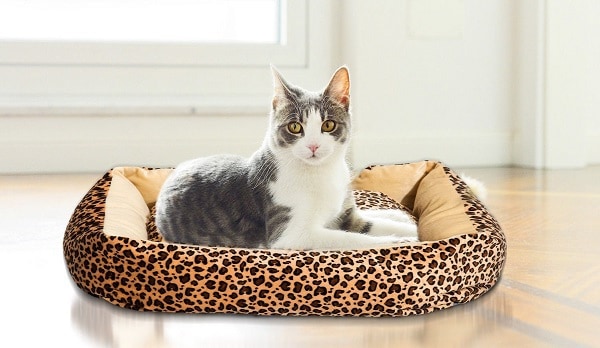
What Different Types of Heated Cat Beds are There?
There are two types, and which one would be best for you to buy depends on a combination on your and your feline friend’s habits.
Electrical
These types of heated cat beds are powered like electric blankets for humans: there’s a heating element stitched into the material of the cat bed itself, and when you plug that in and turn it on, it generates heat that disperses throughout the material.
This type of heated cat bed will warm more evenly since it’s based on an external power source that lets you control the temperature, and to turn it off and on yourself. If your cat is a still sleeper and doesn’t use their bed for anything else, this might be a good choice.
It’s also the type you need if you have a cat with a medical condition that needs a specific temperature range, or if your cat is unable to get itself as warm as it needs to. You should get an electrical type if you’re looking for a heated cat bed you need to control externally.
Self-warming
These kinds of heated cat beds take advantage of a cat’s own movements through material that can capture your cat’s body heat and store it to heat them.
They’re using their own wiggles to keep themselves cozy, which is great if your cat obsessively goes over their favorite spot before they deem it worthy enough to lie down.
If they generate a lot of their own heat and want to wallow in it (and who doesn’t love doing that on a lazy Sunday morning?), and if you’re looking for an environmentally conscious way to give your cat a luxurious nap.
These types of heated cat beds don’t use electricity, so they’re safe for your kitty to use when you’re not home, and they’ll still be usable when the power goes out in the middle of a blizzard. They’re what we call a win-win.
Are Heated Cat Beds Safe?
Don’t worry about your furry friend getting hurt when using their heated cat bed – the wattage on the electrical elements stays firmly below safe temperature thresholds. Plus, a lot of heated cat beds have an internal thermometer that lets you see the exact range it goes through.
You should still use basic fire safety as you do with all electrical devices, and it’s a good idea to keep it unplugged when it’s not being used or at least when you’re not home.
If you’re still worried, check the specifications of the beds you’re looking at. Some are rated for basically continuous use, and others are made for only up to 6 – 10 hours at a time.
If you’re forgetful, or your cat doesn’t have a set nap schedule, a continuous use heated bed may be more useful; the ones with maximum hours may work better for you if you’re more worried about a fire hazard because of old housing material.
Whatever heated cat bed you choose will stay in that sweet spot of warm but not hot, making it your cat’s second favorite spot in the whole world (besides your lap, of course!).
How do I Keep a Heated Cat Bed Clean?
We can’t help you with your cat’s constant need to leave their hair around your home like mini-mes, but you will be able to clean your heated cat bed in one way or another to keep it sanitary and worthy of your best friend’s naps.
Because of the various materials used, your best bet is to look closely at washing instructions as part of your buying process. The self-heating varieties are especially prone to needing special considerations because the materials they use, like Mylar, have special properties that have to be preserved when washed. But never fear, there’s always a way.
Some will have a removable cover you can unzip from around the rest of the bed and throw in the washing machine like any other clothes or towels that get dirty around your house. Dry it, rub it with catnip for that extra special catnap, and you’re good to go.
Some will let you remove the heating element and wash the entire bed itself, which is nice for getting all the dirt and miscellaneous cat debris out of all the corners a vacuum cleaner attachment just doesn’t do justice in.
As long as you remember to never, ever wash the heating element, you should be good. And your kitty will appreciate the gesture, even if they do immediately rub their butts all over it as soon as it comes out of the wash.
What are Some Things to Consider When Looking for a Heated Cat Bed?
Indoor or Outdoor
Outside cats aren’t usually associated with the trappings of indoor comfort like pet beds, but heated cat beds can literally be a lifesaver for felines who prefer to roam the neighborhood but always come back home for sleep.
A heated bed in the middle of a cold snap can mean the world to a cat who otherwise has no use for human gadgets, and you can find a variety of products that have material that stands up to nature.
That’s not a given, though, and the material that’s great for indoors may disintegrate at the first sign of rain or snow when you leave it outside. Determine where your cat will be using their heated bed before you commit to buying one, and you’ll save yourself a lot of replacement money and trouble.
They are Covered or Uncovered
Cats love to bury themselves for their own comfort, and covered cat beds let them have all the experience of toasting like a purrito while they nap.
These little igloos also keep in the warmth better than an open heated cat bed, so if you’re worried about warmth preservation, a covered cat bed is the way to go.
However, if you live in a warmer climate that doesn’t require you to wrap up from September to April, it might be a little too much. Open cat beds allow more freedom of movement and more ventilation, so they’re great for cats who get wiggly or overheated easily.
Power Cord or no Power Cor
You don’t necessarily have to get a self-warming cat bed to avoid power cords, but those will be the bulk of your choice if you need to go in that direction.
No power cord means no string like a thing to temp kitty teeth into accidentally electrocuting themselves, or shorting out the bed’s electricity before it even gets going.
There are some great options for chew-proof cords, though, and usually, electrically heated cat beds come with better temperature controls and heat monitoring equipment, which are both very useful safety features themselves.
If you’ve got a great trick to hide the electrical cords from your curious kitty, or for whatever reason your pet doesn’t tend to destroy them, it may be worth it to get the better internal control that cord-trailing heated cat beds offer.
Padding
This takes into consideration the type of material the rest of your bed is made out of – sometimes the parts that keep heated cat beds warm need extra bits of material to make them palatable to your furry friend’s comfort.
Heating coils can be flexible, but ultimately, they’re a firm piece of tubing running through the very place your cat is supposed to lay on, so make sure if get a bed with an internal heating system, its padding is enough to make them forget they’re lounging on metal.
Also, take into account your cat’s preferences – do they usually favor your fleece comforter when it’s doubled up into the perfect cat cloud? Or do they prefer your thinner couch cushions where they can lord over you from a firmer posture?
Taking a couple of minutes to observe this crucial aspect will make your purchase perfect instead of just good. And your cat deserves that.
Your Budget
If it were up to your cat, all the money in the world would be designated for improving their comfort. But we know you have to put a limit on that, and with heated cat beds, they won’t have to know about your thrift.
There’s a lot of great options all along the price range that will make them a happy kitty, so you’ll easily be able to find something that works for you too. That’s what we’re here to help with!
Why do Cats Like Warm Spots?
Cats don’t operate at the same temperature as humans. While our body temperature is around 98.7 degrees, a cat will be a toasty warm 102. That’s why they’re such a comfort when they sit on our knees in colder weather.
Of course, maintaining a higher body temperature takes energy. Almost one-third of all the energy that a cat uses is burned up keeping their skin and fur healthy, so they can stay warm.
So, cats have evolved to help their bodies along by sleeping in warm places. It means they don’t have to devote so much energy to heat themselves up, as they can let the sun do that job for them. Of course, not all cats are the same, and there are times when a cat is more likely to seek out a warm spot.
- Breed – If a breed is originally from a desert area or has been specifically bred to be hairless, like the Sphynx, then it will need more help to stay warm. Cats such as the Maine Coon, which has thicker hair and is more used to cold temperatures won’t seek the sun out quite so much.
- Age – Kittens are more sensitive to warmth, particularly around their faces. They use this ability to find their mothers, so they can feed. If kittens have lost their mother, then they will need to be kept warm. Kittens who are too cold, may not feed well and will not thrive.
- Health – Older cats will need more help in maintaining their temperature too. As when we get older, we’re more likely to want an extra sweater or a blanket on our knees; elderly cats also like a bit of help. Infection can also cause a cat to seek out warmer (or cooler) places. We might want an extra blanket if we have chills, or to open a window with a fever, cats do the same. If your cat’s behavior changes, then it can be a sign of ill health. If your cat is suffering from arthritis or joint pain, then a heated pad or bed can be just the thing to give them some relief from their joint pain.
When a cat is sleeping, it’s body temperature drops. Finding a nice, warm, spot to nap in will help compensate for that and let your cat sleep for longer. Since cats sleep up to 16 hours a day, that’s important!
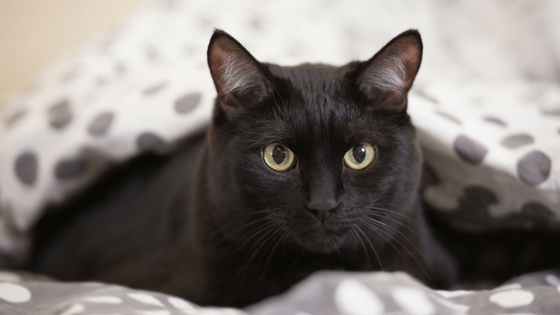
Other Things to Look for in a Heated Cat Bed
Depending on your needs– and those of your pet– there are a number of different choices you will need to make when choosing a heated cat bed.
If you’re looking at the range of beds available and wondering which is best for you, here’s our lowdown on some of the features you should look for to help you decide.
Size
The first thing to consider when choosing a pet bed is size. To get an idea of how much space your cat will need to get comfortable, you will need to take some measurements. It can be helpful to have someone else on hand to distract your cat with play or treats while you use the tape measure.
Start by measuring their spine, from the top of their back to the base of their tail. You will also need to know what your cat weighs. If you have more than one cat, then measure both and look for a bed with enough space for them both.
Got a kitten and you’re not sure what size will last as it grows up? You can do your research on the breed and make the best guess as to how big kitty will be when he or she has done growing.
Available Space
And it isn’t just the size of your cat that is important to take into consideration. You will also need to think about where you are going to put the bed.
If you have a certain windowsill or tabletop in mind, then measure that area before you go shopping, so you know that your bed will be suitable for that location.
When you’re thinking about location, you’ll also need to think about the availability of a power outlet. If there isn’t one nearby, you’ll want to buy an extension cable too (non-electrical options are available, as we’ll discuss later in the article!)
Indoor or Outdoor
Will your cat bed be located indoors or out? If it will be outside, then you will need to think carefully about where you place the pet bed, as it will need to be close to a source of power.
You will also be looking at buying a kennel-style cat home that has a roof to help keep your cat safe and dry when it’s raining or snowing.
Outdoor Kitty House
This kitty house doesn’t just offer a sheltered spot; it’s also been designed to keep your cat safe. There are two doors, each with their own flap to retain the heat. That means that your kitty will be able to escape if any predators come looking for their dinner.
Mat or Bed?
If you have a drafty area in mind, then a high-sided pet bed can help retain the heat. If not? Then this mat can work really well. Both beds operate in the same way; it’s really a matter of personal preference for you and your cat.
Thermo-Kitty Mat
With a removable cover for easy washing, the inside heater uses just 6 Watts and has an internal thermostat so your cat won’t get too warm. Coming in a range of colors, the Thermo-Kitty is a MET listed.
Thermo-Pad Bed
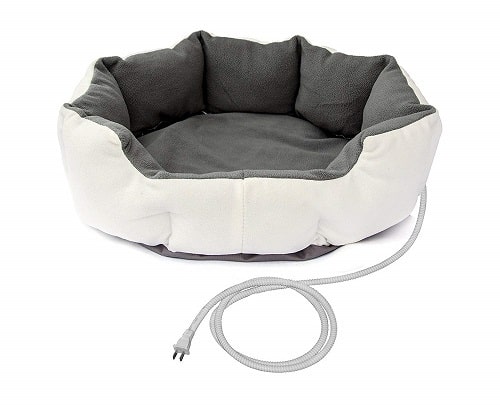
Electric or Not?
If you have a power outlet, then the easiest way to heat up a pet bed is with an electric mat. If you don’t have one handy, then you can choose a model which has a microwaveable insert.
Alternatively, there are now self-warming beds that have been designed using space technology, just right for an adventurous little fur rocket.
Aspen Self-Warming Pet Bed
This clever bed doesn’t make heat; it uses your pets own body warmth to create a toasty environment. Made from the same space-age technology as Mylar blankets, it will soon warm up and stay warm when your cat curls up inside.
Snugglesafe Microwave Heat Pad
This pad gives an amazing 10 hours of heat after being put in the microwave for just a few minutes. It’s about the size of a dinner plate and is perfect for slipping into an existing pet bed or under a favorite blanket.
SmartPetLove Kitten Warmer
If you add some dry rice to this mama cat-shaped bag, you can put it into the microwave and create a lovely warm shape to snuggle. If you’re raising kittens without their Queen, this could be the heater for you.
Washable
Keeping your pet bed clean is an important part of looking after your pet’s health. Not only will the bed get grimy, but you may also find that flea eggs and other pests come home with an outdoor cat and set up home there.
It’s important that you can either remove the covers of your pet bed to wash it or that the entire thing can be placed in the washing machine. Low-temperature washes aren’t as effective at getting rid of problem guests as higher ones.
Padding
For most cats, the standard layer of foam or fleece that is provided in a cat bed will be fine. However, if you have a pet who is recovering from an injury or looking for relief from the pain of arthritis, then a more padded mattress will be a good idea. In that case, look for a bed that has a memory foam pad, which will give maximum support and comfort.
Petfusion Premium Cat Bed
Ideal for small dogs and cats, the memory foam insert helps keeps your elderly kitty more mobile by reducing joint pain. The cover is removable, for easy washing.
Eco-Friendly
If you don’t want to add to your energy bills and carbon footprint, then you can always choose a bed that attaches to a window sill or radiator and makes the most of the natural heating your home already provides.
You & Me Cat Perch
This clever design uses industrial strength velcro to attach to any window you choose. Find your cat’s favorite sunny spot and set it up!
Canac Cat’s Cradle
Hook this cat’s cradle over a radiator and see how long it takes your kitty to make a home there. We’re betting it won’t take long at all!
Cooling Options
If you live in an area that has extremes of temperature either way, then you might want to look at a bed that also includes a cooling option. The same gel pad can be microwaved for warmth, or put into the freezer to help your cat stay cool on those scorching hot days.
Petfit for Life Warming & Cooling Pad
Created to meet customer’s demands, this pad does double duty to keep your kitty at the right temperature no matter what the weather. It has a soft fleece cover that is easy to remove to put in the washing machine.
Ready to Choose!
As you can see, there are plenty of things to consider when you are choosing a heated pet bed. Whether you want something indoor or outdoor, electric or not, there are beds for you to buy. We hope that this guide will help you choose exactly the right bed for you and your pet!
Recommended Reads
- Petplan vs Healthy Paws Insurance: Which Is The Best?
- What You Need To Know About Cat Furniture
- How to Keep Your Cat Safe During the Winter Weather









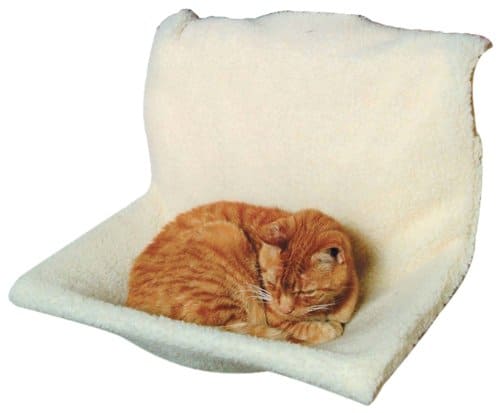


Leave a Reply